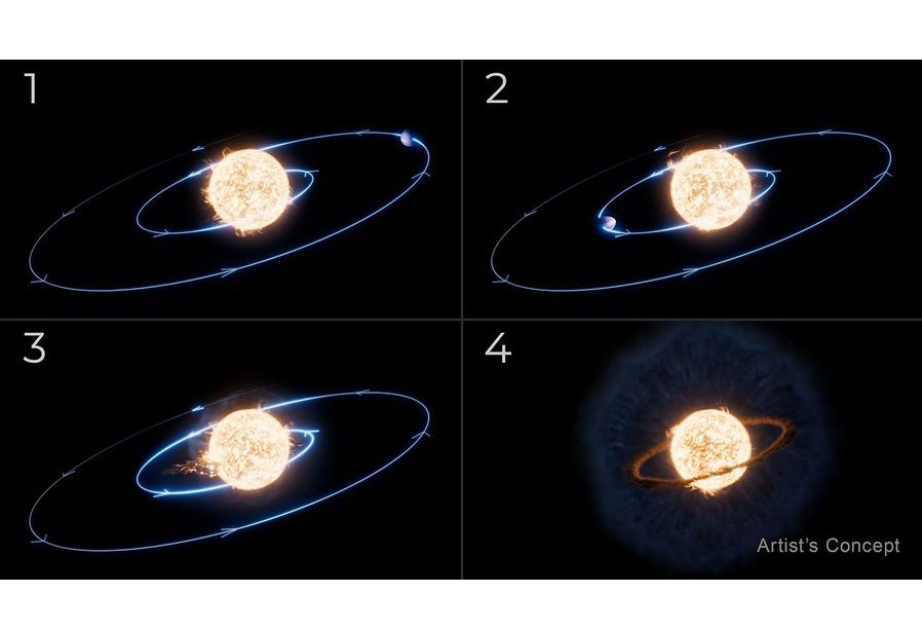Observations from NASA’s James Webb Space Telescope have provided a surprising twist in the narrative surrounding what is believed to be the first star observed in the act of swallowing a planet, according to NASA Science.
The new findings suggest that the star actually did not swell to envelop a planet as previously hypothesized. Instead, Webb’s observations show the planet’s orbit shrank over time, slowly bringing the planet closer to its demise until it was engulfed in full.
“Because this is such a novel event, we didn’t quite know what to expect when we decided to point this telescope in its direction,” said Ryan Lau, lead author of the new paper and astronomer at NSF NOIRLab (National Science Foundation National Optical-Infrared Astronomy Research Laboratory) in Tucson, Arizona. “With its high-resolution look in the infrared, we are learning valuable insights about the final fates of planetary systems, possibly including our own.”
Two instruments aboard Webb conducted the post-mortem of the scene – Webb’s MIRI (Mid-Infrared Instrument) and NIRSpec (Near-Infrared Spectrograph). The researchers were able to come to their conclusion using a two-pronged investigative approach.
The star at the center of this scene is located in the Milky Way galaxy about 12,000 light-years away from Earth.
The brightening event, formally called ZTF SLRN-2020, was originally spotted as a flash of optical light using the Zwicky Transient Facility at Caltech's Palomar Observatory in San Diego, California. Data from NASA’s NEOWISE (Near-Earth Object Wide-field Infrared Survey Explorer) showed the star actually brightened in the infrared a year before the optical light flash, hinting at the presence of dust. This initial 2023 investigation led researchers to believe that the star was more Sun-like, and had been in the process of aging into a red giant over hundreds of thousands of years, slowly expanding as it exhausted its hydrogen fuel.
However, Webb’s MIRI told a different story. With powerful sensitivity and spatial resolution, Webb was able to precisely measure the hidden emission from the star and its immediate surroundings, which lie in a very crowded region of space. The researchers found the star was not as bright as it should have been if it had evolved into a red giant, indicating there was no swelling to engulf the planet as once thought.











.jpeg)





.png)



